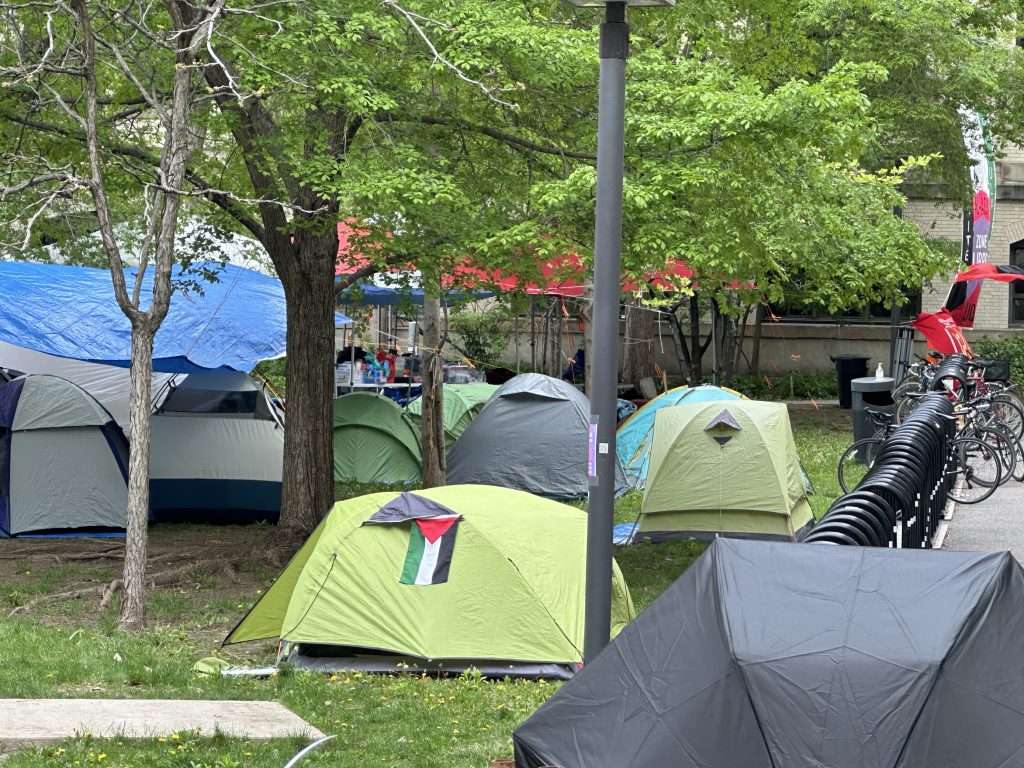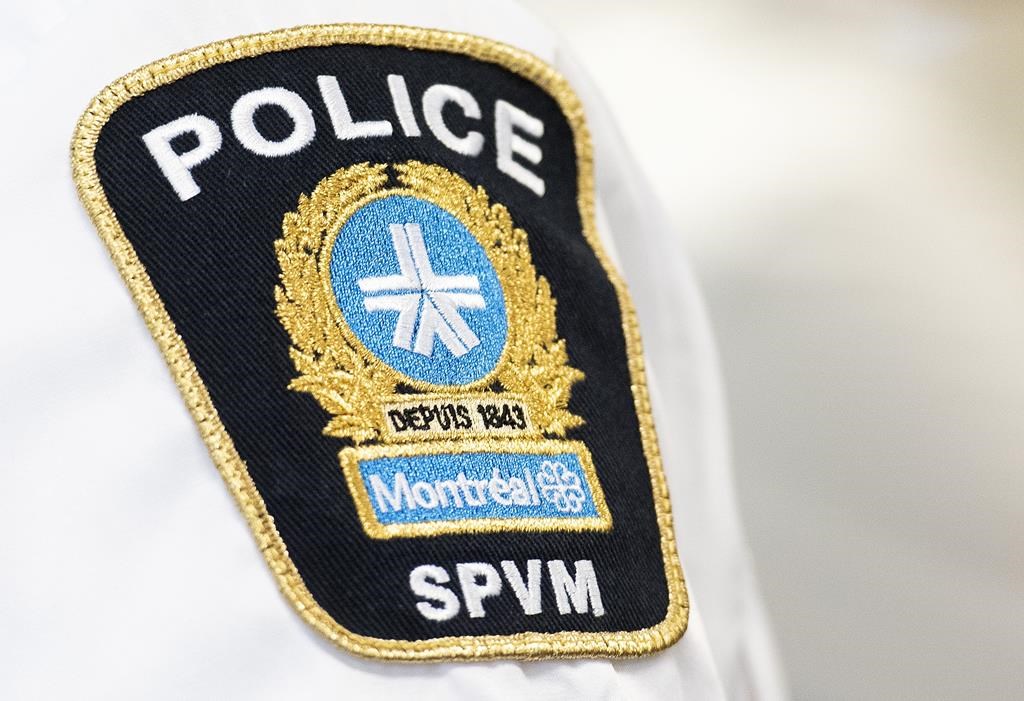Mohawk Mothers concerned over handling of forensic evidence at former Royal Victoria Hospital in Montreal
Posted October 2, 2023 11:08 am.
Last Updated October 2, 2023 9:28 pm.
The Mohawk Mothers are voicing concerns regarding the alleged mishandling of forensic evidence at the former Royal Victoria Hospital site in Montreal.
This comes as construction activities by Société des infrastructures du Québec (SQI) and McGill University are set to begin Monday in an area where search dogs previously detected the scent of human remains.
According to a press release from the Mohawk Mothers, the SQI announced its intention to relocate piles of soil excavated from an area where three Historic Human Remain Detection Dogs (HHRDD) had previously detected the scent of human remains.
The Mohawk Mothers say they worry that moving these piles could jeopardize the forensic chain of custody and result in the dismissal of other potential sources of the human remains scent as excavation work proceeds in the area.
“They want to move the piles that are unsifted to another area, stating that they need the place for work, but they’re not supposed to continue with work until we have determined where those remains have come from, that smell that the dogs detected,” said Kwetiio, Mohawk Mother.
They also say that cultural monitors discovered remnants of a child’s shoe in a ditch in zone 11 of the construction site. This discovery had allegedly gone unreported, even though other remnants of children’s shoes were excavated in the same zone as indicated by the dogs.
“We find another child’s shoe in there and someone found it, but they just tossed it aside. It was sitting right on top,” said Kwetiio. “There was bones found. We have no report yet what those bones are, where they come from, if they were human, if they were animal. But we have no report on it.”
Additionally, several bones and a ball of hair were excavated in the zone identified by the dogs but were allegedly not reported to Mohawk cultural monitors.
“As history shows, many remains are found in basements of buildings, as such behind me,” said Kwetiio. “They’re found in pipes, they’re found in false walls, they’re found under, whether it’s gravel, whether it’s dirt, whether it’s cement, there’s remains found in there and they’re not letting us investigate that.”
RELATED
Mohawk Mothers seek halt to excavation amid grave search at former Montreal hospital
On Sept. 14, the Mohawk Mothers took legal action to stop the drilling and excavation at the site. However, their motion was denied by a Quebec Superior Court judge, ruling that work at the former hospital site in Montreal could proceed.
Justice Gregory Moore argued that the Mohawk Mothers “have not proved that drilling in zone 11 will disturb any unmarked graves nor that excavation will be conducted in other zones before the plaintiffs’ application for a safeguard order is argued at the end of October,” according to the judgment.
In addition, the Mohawk Mothers say the investigation is being led by McGill and SQI rather than following the Indigenous-led approach mandated by the court.
“We have lost all confidence in SQI and McGill as the Kahnistensera,” said Kwetiio.
McGill responds to the allegations
In a statement to CityNews Monday afternoon, McGill University’s Director of Institutional Communications, Michel Proulx, says: “From the beginning, the archeological work on the site of the old Royal Victoria Hospital has been led by archeologists possessing the expertise recommended by the independent panel of experts and conducted in full compliance with the Settlement Agreement reached last April. Cultural monitors appointed by the Mohawk Mothers have been given access to the site for all phases of work.”
Proulx says to date, no evidence has been found to substantiate the presence of unmarked graves.
“Archaeological excavation was carried out in the area of the site identified by the Historic Human Remains Detection Dogs as potentially containing human remains, and in nine other areas identified by ground-penetrating radar (GPR) as potentially containing unmarked graves. In all cases, thorough investigation conducted by the archeological firm recommended by the panel of experts has found no evidence that leads these experts to determine the presence of human remains or unmarked graves on any of these areas.”
“The archeological firm also confirms it does not consider that any of the articles uncovered during the excavation constitute significant discoveries, or that they constitute evidence of human remains or graves.”
“In the expert opinion of the bio-archeologist conducting the work, the few bones that have recently been uncovered are animal bones. That said, a full analysis will be conducted to confirm that finding,” said Proulx.
“Moreover, the archeological firm has assured all parties, including the Mohawk Mothers, that all the items found, including the animal bones, are safely stored in their laboratories. The forensic chain of custody has been fully preserved.”
“Throughout this process, the Mohawk Mothers have been kept fully informed of all findings, and they are provided with the reports from the experts carrying out the archeological techniques. Moreover, the expert panel that had been created to advise on how to conduct this work was never disbanded; it has simply completed the first part of its mandate as determined by the Settlement Agreement.”
McGill says it will continue to honour all provisions of the Settlement Agreement.
SQI responds to the allegations
In a statement to CityNews Monday evening, the communications and media relations advisor of the Société québécoise des infrastructures (SQI), Anne-Marie Gagnon, says: “The implementation of the archaeological plan continues in accordance with the terms of the settlement agreement reached between the parties last spring and the recommendations of the Panel of archaeological experts.”
“It is imperative to reaffirm the commitment of all project partners to shed light on allegations of possible burials. The SQI (Société québécoise des infrastructures) and its partners have committed, in good faith and rigorously, to conduct archaeological research in the company of experts in the field.”
Gagnon went on to say that it would like to correct some of the allegations made by the Mohawk Mothers regarding ongoing archaeological research.
“Despite research conducted in all identified areas of interest in the archaeological research plan, and the various stages of it (ground-penetrating radar, search dogs, manual local excavations, and analysis conducted at each stage), to date, there is no evidence to confirm the presence of burials.
“The report of the panel of archaeologists informs us that Detection dogs for historical human remains (DHHDR) are trained to detect the smell of ancient human bones and teeth. Their skills and training are similar to those of cadaver dogs used in police work. Although there are only a few published studies evaluating the effectiveness of DHHDR in locating unmarked graves, they suggest that dogs are capable of detecting buried remains up to 1-2 meters deep (…). Caution is advised, as another study noted 20 to 70% false positives (Cablk & Sagebiel 2011)[i].”
“It should be recalled that the procedure surrounding archaeological verifications was supervised by a panel of archaeologists appointed as part of the agreement with the Mohawk Mothers. This panel has completed its mandate and is not dissolved, contrary to the allegations of the Mohawk Mothers. It could thus be put to use again in the future.”
“In accordance with the agreement, the Mohawk Mothers are regularly informed of the implementation of archaeological techniques. It was agreed that Indigenous cultural monitors appointed by the Mohawk Mothers could be present during the execution of archaeological techniques. While respecting established health and safety guidelines, they can visit the site to monitor archaeological work. The SQI and its partners wish to collaborate with the Mohawk Mothers but will not compromise on health and safety on the construction site.”
“All work is carried out according to the principles of the art of archaeology and by accredited professional firms. All artifacts are stored according to established protocols and are secure in the designated laboratories. No suspicious elements justifying a halt to work or additional precautions on the site have been observed by the archaeologists…”
“To ensure optimal soil movement, a strategy has been put in place by the archaeologists. Soils are moved one pile at a time to avoid mixing. An archaeologist supervises the loading of the truck, while another supervises the unloading. Each pile of soils is clearly identified, and a priority sieving sequence is developed. The piles are all covered with weatherproof protective membranes.”
“In the event that a burial discovery is made, and depending on its nature, the SPVM (Montreal Police), the coroner, and the Ministry of Culture and Communications will establish the protocols and next steps to be followed.”
“Once again, the SQI reiterates its willingness to shed light, in a spirit of collaboration, on allegations of burial presence. In this regard, Indigenous communities will be informed of any discoveries, and Indigenous protocols will be respected.” said Gagnon.
“We just want to make sure that there are no survivors suffering from their family being in there,” said Kwetiio. “We don’t want no survivors or people that are witness to this, to just be some kind of conspiracy theory 50 years from now.”



